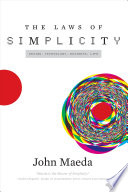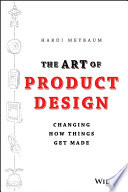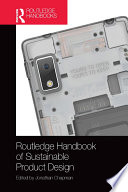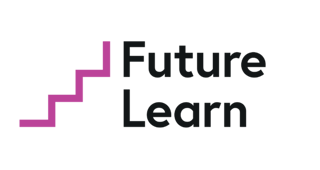Whether it's for yourself or your staff: Investing in training and education is one of the best things you can do. We've collected the best Product Designer trainers and resources for you.
A well-written and thorough book can be an amazing path to build deeper understanding and also act as a handbook as you discover the internet's vast resources.
These are our and our expert's top picks to get started building relevant skills to widen your career options.
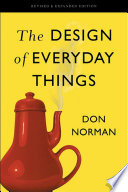
Design doesn't have to complicated, which is why this guide to human-centered design shows that usability is just as important as aesthetics. Even the smartest among us can feel inept as we fail to figure out which light switch or oven burner to turn on, or whether to push, pull, or slide a door. The Design of Everyday Things shows that good, usable design is possible. The rules are simple: make things visible, exploit natural relationships that couple function and control, and make intelligent use of constraints. The goal: guide the user effortlessly to the right action on the right control at the right time.
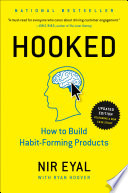
Why do some products capture widespread attention while others flop? What makes us engage with certain products out of sheer habit? Is there a pattern underlying how technologies hook us? Nir Eyal answers these questions (and many more) by explaining the Hook Model—a four-step process embedded into the products of many successful companies to subtly encourage customer behavior. Through consecutive “hook cycles,” these products reach their ultimate goal of bringing users back again and again without depending on costly advertising or aggressive messaging. Hooked is based on Eyal’s years of research, consulting, and practical experience. He wrote the book he wished had been available to him as a start-up founder—not abstract theory, but a how-to guide for building better products. Hooked is written for product managers, designers, marketers, start-up founders, and anyone who seeks to understand how products influence our behavior.
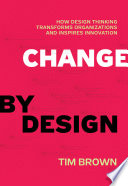
In Change by Design, Tim Brown, CEO of IDEO, the celebrated innovation and design firm, shows how the techniques and strategies of design belong at every level of business. Change by Design is not a book by designers for designers; this is a book for creative leaders who seek to infuse design thinking into every level of an organization, product, or service to drive new alternatives for business and society.
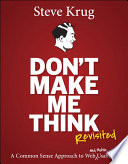
Since Don’t Make Me Think was first published in 2000, hundreds of thousands of Web designers and developers have relied on usability guru Steve Krug’s guide to help them understand the principles of intuitive navigation and information design. Witty, commonsensical, and eminently practical, it’s one of the best-loved and most recommended books on the subject. Now Steve returns with fresh perspective to reexamine the principles that made Don’t Make Me Think a classic–with updated examples and a new chapter on mobile usability. And it’s still short, profusely illustrated…and best of all–fun to read. If you’ve read it before, you’ll rediscover what made Don’t Make Me Think so essential to Web designers and developers around the world. If you’ve never read it, you’ll see why so many people have said it should be required reading for anyone working on Web sites.
Ten laws of simplicity for business, technology, and design that teach us how to need less but get more. Finally, we are learning that simplicity equals sanity. We're rebelling against technology that's too complicated, DVD players with too many menus, and software accompanied by 75-megabyte "read me" manuals. The iPod's clean gadgetry has made simplicity hip. But sometimes we find ourselves caught up in the simplicity paradox: we want something that's simple and easy to use, but also does all the complex things we might ever want it to do. In The Laws of Simplicity, John Maeda offers ten laws for balancing simplicity and complexity in business, technology, and design—guidelines for needing less and actually getting more.
Embrace Open Engineering and accelerate the design and manufacturing processes. Product development is a team sport, but most companies don't practice it that way. Organizations should be drawing on the creativity of engaged customers and outsiders, but instead they rely on the same small group of internal "experts" for new ideas. Designers and engineers should be connecting with marketing, sales, customer support, suppliers, and most importantly, customers. The Art of Product Design explains the rise of "Open Engineering," a way of breaking down barriers and taking advantage of web-based communities, knowledge, and tools to accelerate the design and manufacturing processes. Explains how to establish open flows of information inside and outside an organization, increasing the quality and frequency of input from different groups and stakeholders. Hardi Meybaum is the founder and CEO of GrabCad, the largest community of mechanical engineers and designers in the world
As a cultivated form of invention, product design is a deeply human phenomenon that enables us to shape, modify and alter the world around us – for better or worse. The recent emergence of the sustainability imperative in product design compels us to recalibrate the parameters of good design in an unsustainable age. Written by designers, for designers, the Routledge Handbook of Sustainable Product Design presents the first systematic overview of the burgeoning field of sustainable product design. Brimming with intelligent viewpoints, critical propositions, practical examples and rich theoretical analyses, this book provides an essential point of reference for scholars and practitioners at the intersection of product design and sustainability. The book takes readers to the depth of our engagements with the designed world to advance the social and ecological purpose of product design as a critical twenty-first-century practice. Comprising 35 chapters across 6 thematic parts, the book’s contributors include the most significant international thinkers in this dynamic and evolving field.
These days, online courses are no longer just a sequence of videos. They are usually accompanied by projects and a learning community, career advice, keeping you accountable and on the path.
Our experts recommend these courses, from free selections to paid programs.

The capstone course, part of the Design Thinking MicroMasters program, will be a cumulative experience incorporating all aspects of the design thinking process, from end to end. In this course, you will be asked to solve a problem using the design thinking process. You will demonstrate your understanding by submitting a final project, along with documentation to support your findings.
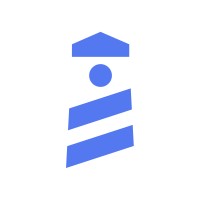
There is nothing more powerful than an idea whose time has come. This course is designed to help you materialize your game-changing idea and transform it into a product that you can build a business around. Product Design blends theory and practice to teach you product validation, UI/UX practices, Google’s Design Sprint and the process for setting and tracking actionable metrics.

At Home Engineering The Course has helped thousands of people worldwide to learn CAD and product design. This is the course to learn CAD, product design, and engineering fundamentals. I have over 8 years of experience designing and building in industry and research, and I have a Masters of Science in mechanical engineering from the U of MN. I was a mechanical engineer at Google [X], and I've worked with multiple world-leading researchers in technology. After taking this course, you will be able to make custom parts from almost any material, including metal, plastic, ceramic, and composites, enhancing you through tools and knowledge. Using modern, professional, and free tools, I bring together the best of the internet to get you designing and building in 2021.

This Specialization is designed for aspiring and active product leaders seeking to pursue careers in product management, product design, and related roles. Through five practical courses, you will learn the fundamentals for designing and managing products. Upon completion, you will have created your own personal toolbox of knowledge and techniques for approaching and solving real-world problems that product leaders face.
The evolution of design has seen it become a discipline no longer limited to the concerns of a singular, specific domain and develop to become a pathway for solving complex, nonlinear problems. Design is becoming a capability-enhancing skill, equipping people with the ability to deal with uncertainty, complexity and failure. In this course, we demonstrate how you can use design as a way of thinking to provide strategic and innovative advantage within your profession. Suitable for anyone who is curious about design and translating the processes and tools of design thinking into innovative opportunities, over 5 weeks we explore, apply and practice the design process: think, make, break and repeat.
Get an introduction to agile product development and design thinking so you can build better digital products. Discover how to create useful digital products using agile and design thinking. Despite everyone’s good intentions, hard work and solid ideas, too many projects end up creating unneeded, unusable, and unsellable products. But, it doesn’t have to be this way. Agile and design thinking offer a different and effective approach to product development, one that results in valuable solutions to meaningful problems. In this course, you’ll learn how to determine what’s valuable to a user early in the process, to frontload value, by focusing your team on testable narratives about the user and creating a strong shared perspective.
MentorCruise is a career mentorship platform that offers a risk-free trial with each training. We believe that you should be able to test the waters and build confidence before committing to a long-term relationship.
There’s no match to having a trusted go-to source for addressing your career-specific needs. MentorCruise comes in to give you access to industry-veterans who have been in your place and know exactly what you need.
We’ve already delivered 1-on-1 mentorship to thousands of students, professionals, managers and executives. Even better, they’ve left an average rating of 4.9 out of 5 for our mentors.

"Naz is an amazing person and a wonderful mentor. She is supportive and knowledgeable with extensive practical experience. Having been a manager at Netflix, she also knows a ton about working with teams at scale. Highly recommended."
"Brandon has been supporting me with a software engineering job hunt and has provided amazing value with his industry knowledge, tips unique to my situation and support as I prepared for my interviews and applications."

"Sandrina helped me improve as an engineer. Looking back, I took a huge step, beyond my expectations."

"Andrii is the best mentor I have ever met. He explains things clearly and helps to solve almost any problem. He taught me so many things about the world of Java in so a short period of time!"

"Greg is literally helping me achieve my dreams. I had very little idea of what I was doing – Greg was the missing piece that offered me down to earth guidance in business."

"Anna really helped me a lot. Her mentoring was very structured, she could answer all my questions and inspired me a lot. I can already see that this has made me even more successful with my agency."
